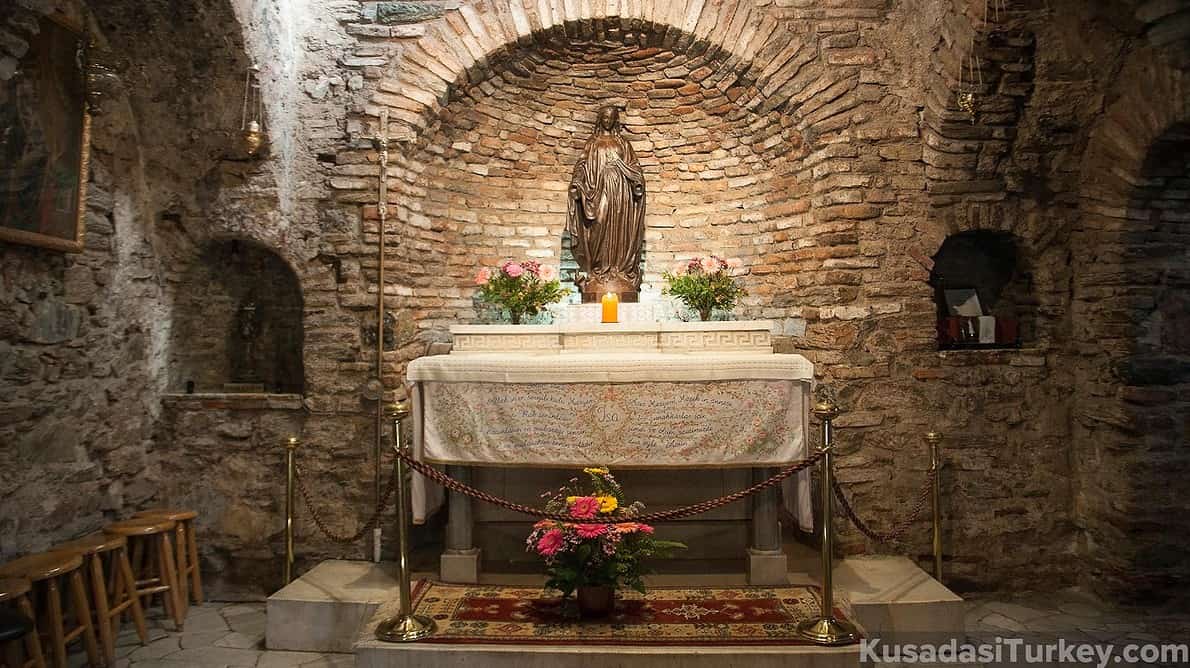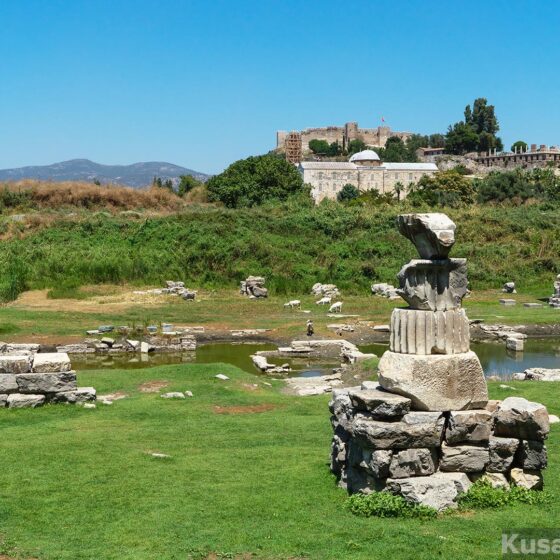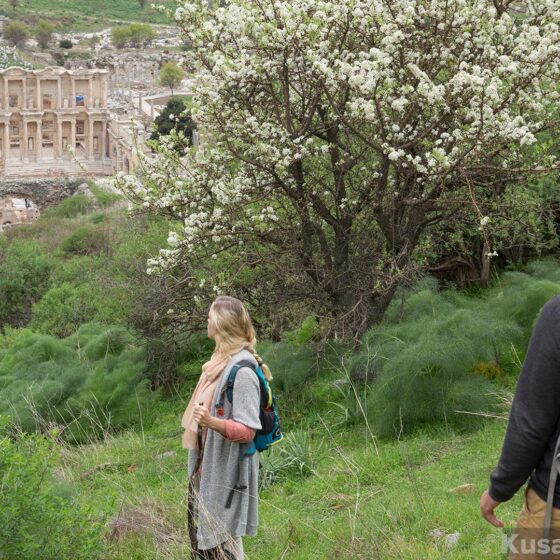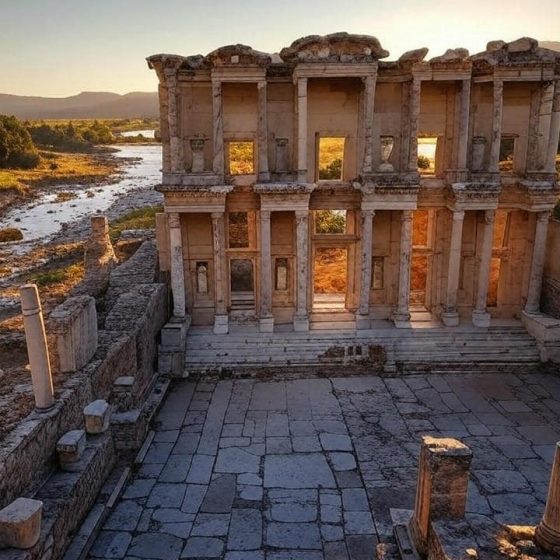Ephesus is one of the most famous ancient cities, known for its ruins and rich history. While many people know about its grand theatre and the Library of Celsus, there are many lesser-known stories buried in time. These tales add depth to the city’s past and make it more than just a collection of old stones.
The Cave of Seven Sleepers
One of the strangest stories connected to Ephesus is that of the Seven Sleepers. According to legend, during the rule of Emperor Decius in the 3rd century AD, seven young men refused to give up their Christian faith. They fled into a cave near Ephesus to escape persecution. Soldiers sealed the cave, trapping them inside.
Centuries later, during the reign of Theodosius II, workers opened the cave and found the seven men alive. They had been asleep all that time. After sharing their story, they passed away peacefully. Both Christians and Muslims now visit the site, as the story is also mentioned in the Quran.
The Fire That Destroyed the Temple of Artemis
The Temple of Artemis in Ephesus was one of the Seven Wonders of the Ancient World. It was a massive structure, known for its beauty and importance in worship. But in 356 BC, a man named Herostratus set it on fire.
Herostratus was not a political rebel or an enemy of the city. He was an ordinary man who wanted his name to be remembered forever. The Ephesians were so outraged that they banned anyone from mentioning his name. However, his plan worked. Historians wrote about him, and now, more than 2,000 years later, people still know his name.
The temple was later rebuilt, but it was eventually destroyed by invaders and abandoned. Today, only a few columns remain.

The Lost Gold of Ephesus
Many ancient cities had stories of hidden treasure, and Ephesus is no exception. Some records suggest that during the fall of the city, its leaders tried to protect their wealth. Gold and silver were supposedly hidden beneath important buildings, such as the theatre and the agora (marketplace).
Over the years, archaeologists have found coins, statues, and jewellery, but no large hoards of treasure have ever been recovered. Did someone get to it first, or is it buried beneath the ruins?
See also: Top Rated Kusadasi Tours
The Strange Statue of Artemis
The statue of Artemis in Ephesus was very different from how the goddess was shown in other parts of the Greek world. Instead of a young huntress with a bow, the statue in Ephesus showed Artemis with a tall, stiff posture and many round shapes on her chest.
For years, historians debated what these shapes were. Some believed they were breasts, symbolizing fertility and motherhood. Others argued that they were bull testicles, offered to the goddess in sacrifices. Another theory suggested that they were a type of decoration meant to represent power.
While the real answer remains unknown, this version of Artemis was unique to Ephesus and made her worship stand out from that of other Greek gods.
The Underground Tunnels of Ephesus
Ephesus was a major city, and like many great cities, it had underground tunnels. The most famous one connected the Library of Celsus to a nearby brothel.
Wealthy men who wanted to visit the brothel without being seen in public would enter through the library. A hidden passage led them to the brothel, allowing them to move unnoticed.
Some archaeologists believe there may be more underground tunnels beneath Ephesus, possibly leading to other important sites. However, many have collapsed or have yet to be fully explored.
See also: Exploring Ephesus in Style: Allure of Private Tours
The House of the Virgin Mary
Christian tradition holds that Mary, the mother of Jesus, lived her final years near Ephesus. According to this belief, she was brought to the area by the apostle John after the crucifixion of Jesus.
Today, a small stone house on a hill outside Ephesus is said to be her home. While there is no definite proof, the site has been recognized by the Catholic Church and visited by several popes. It remains a place of pilgrimage for both Christians and Muslims.

The Curse of the Great Theatre
The Great Theatre of Ephesus is one of the largest in the ancient world, able to hold around 25,000 people. It was used for performances, political gatherings, and gladiator fights.
However, there is a story that the theatre was cursed. Some believe that an important figure—possibly a Christian martyr—was executed there, and that this act brought misfortune upon the city. Over time, earthquakes damaged the theatre, and the city’s decline led to its abandonment.
Even today, people who visit the theatre say it has an eerie atmosphere, especially when the sun begins to set.
The Library That Was Not Really a Library
The Library of Celsus is one of the most famous ruins in Ephesus. Its grand facade gives the impression that it was one of the greatest libraries of the ancient world. However, some historians believe it was more of a monument rather than a functional library.
The building was actually a tomb for Tiberius Julius Celsus Polemaeanus, a former governor. His son built the structure in his honour, and while it may have contained some scrolls, it was likely more of a showpiece than a centre for study.
Despite this, its design remains one of the most impressive examples of Roman architecture.
The City That Moved
Most people think of Ephesus as a single location, but in reality, the city moved several times.
The original settlement was closer to the sea, but over the centuries, the harbor filled with silt, making trade more difficult. This forced the people of Ephesus to shift the city inland. Later, after repeated attacks and natural disasters, the city was abandoned entirely.
Today, what remains of Ephesus is inland, but in ancient times it was a major port city connected to the Mediterranean.
Last updated on February 15, 2025



